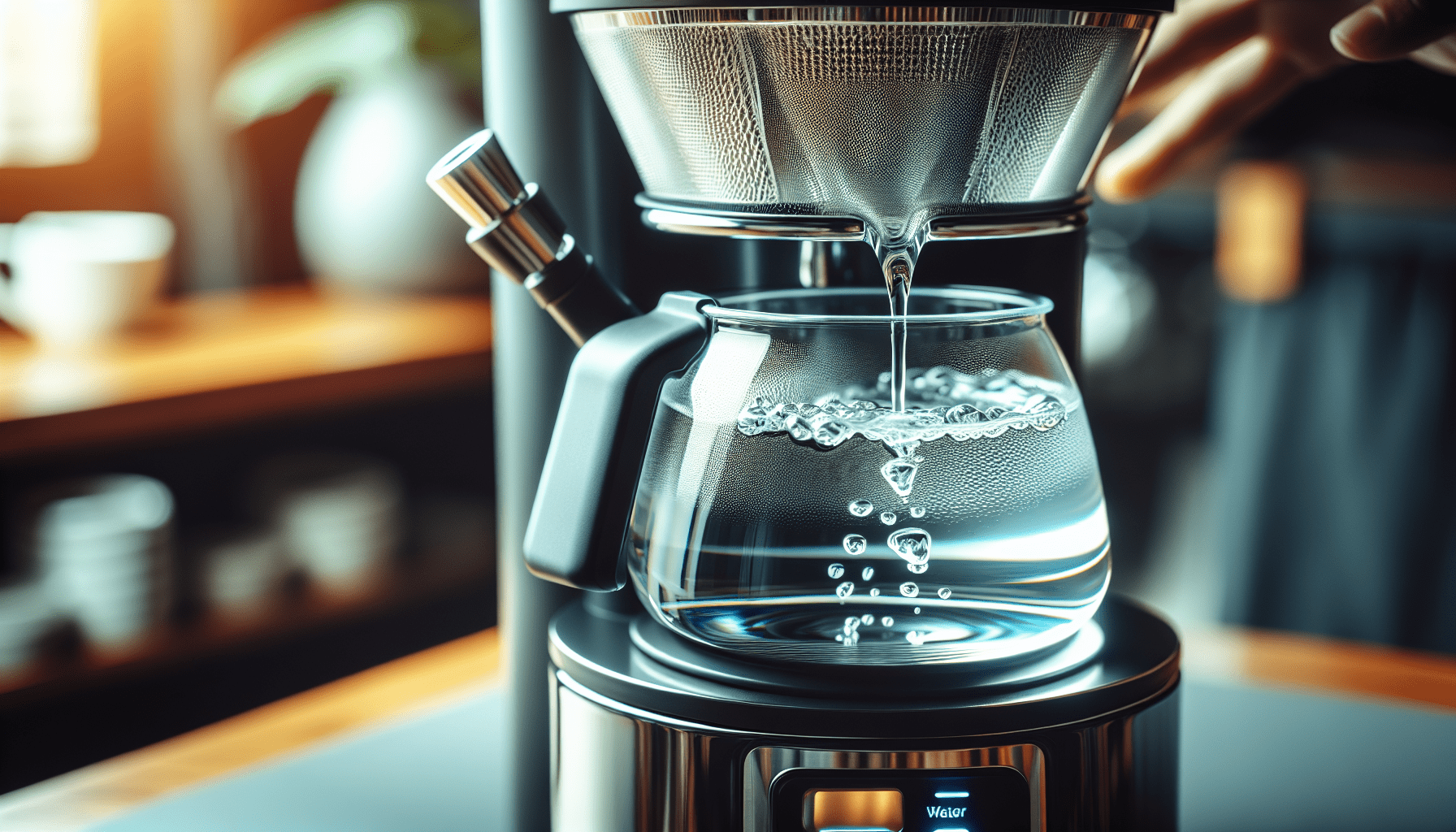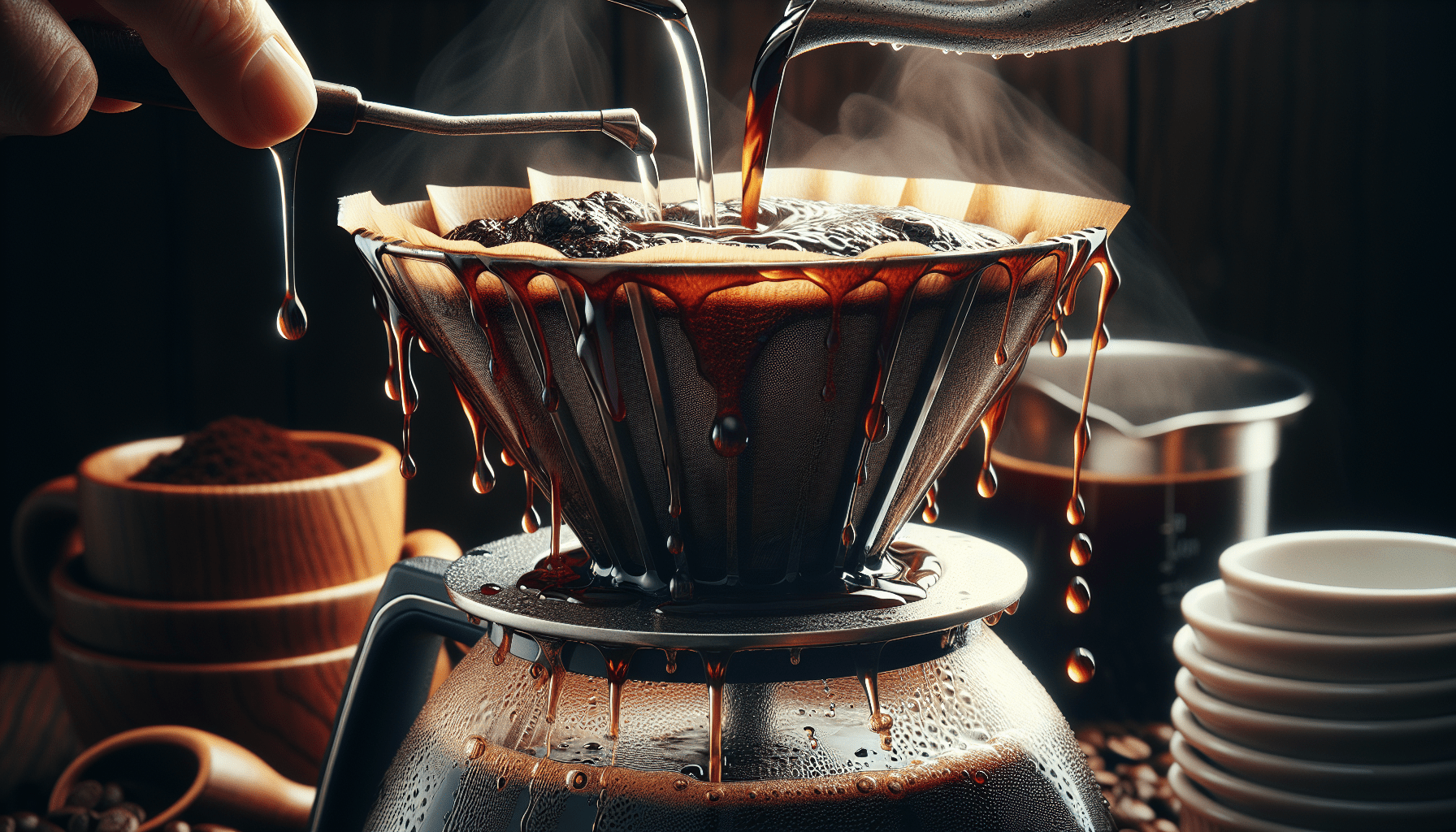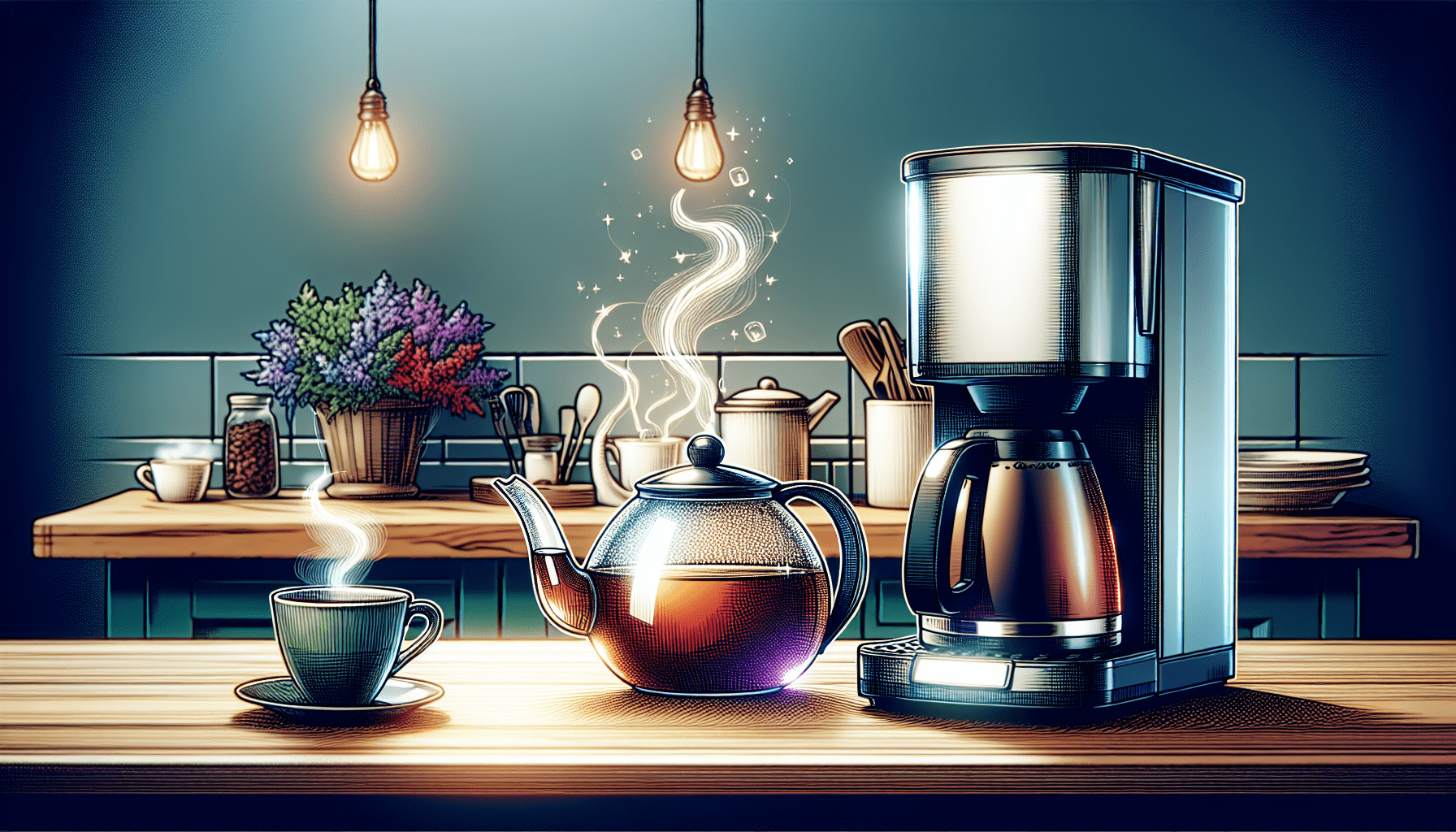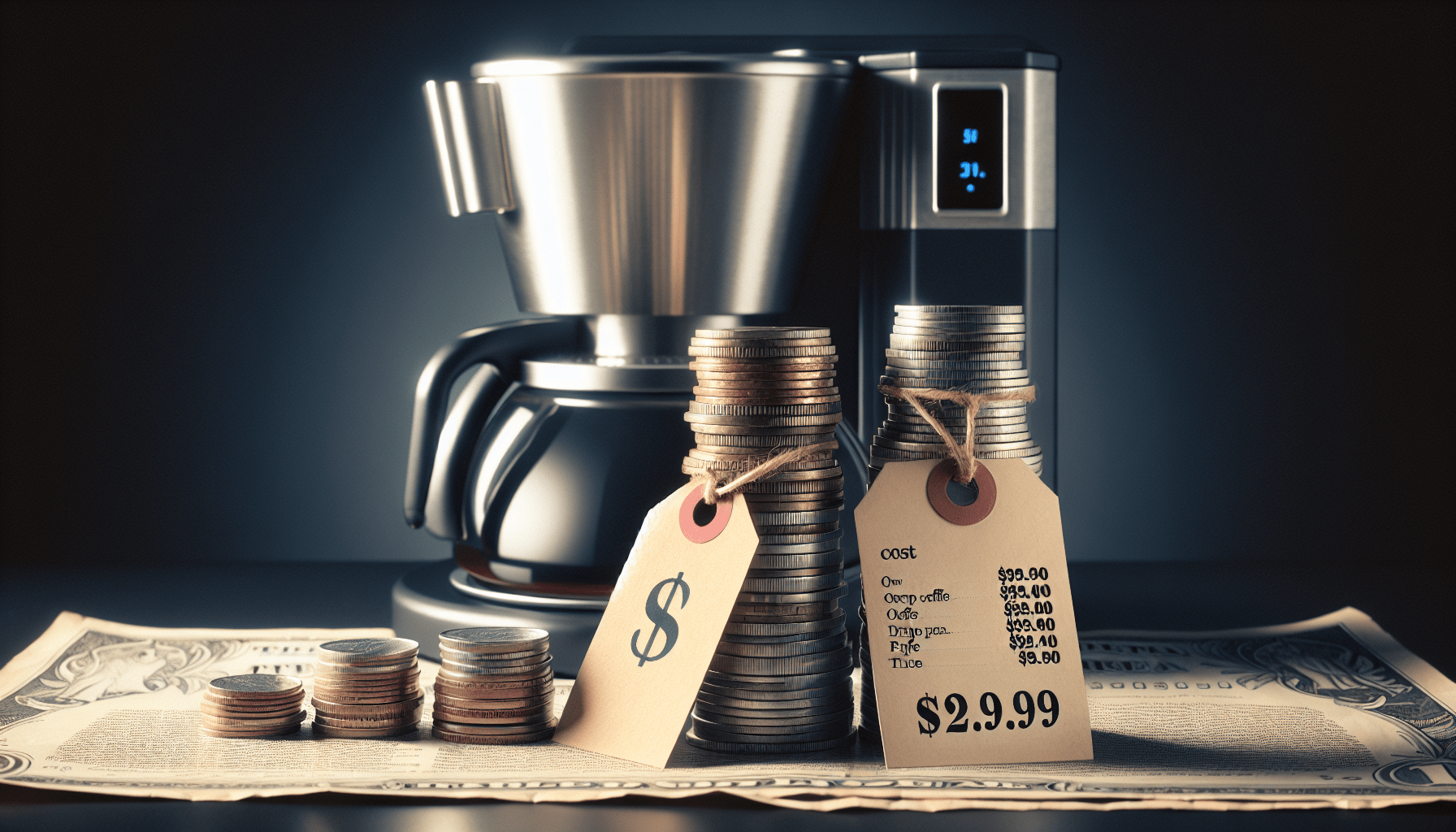You step into your favorite coffee shop, enticed by the aroma of freshly brewed coffee that fills the air. As you approach the counter, you notice the barista skillfully pouring water from a jug into a strange contraption – a drip coffee maker. Ever wondered how this magic machine creates your perfect cup of joe? Let’s uncover the secrets behind the drip coffee maker and unravel the science that brings forth that irresistible morning brew.
Overview of a Drip Coffee Maker
A drip coffee maker is a popular and convenient appliance for brewing coffee at home or in the office. It is designed to automate the process of making coffee by using a combination of water heating, ground coffee preparation, and water dispersion. With its user-friendly interface and efficient brewing capabilities, the drip coffee maker has become a staple in many households.
Basic Components
The basic components of a drip coffee maker include a water reservoir, heating element, thermostat, coffee filter, coffee basket, spray head, hot plate, brew strength control, automatic shut-off, pause and serve function, and cleaning accessories. Each component plays a vital role in the functioning of the machine and contributes to the overall brewing experience.
Purpose of a Drip Coffee Maker
The primary purpose of a drip coffee maker is to extract the flavors and aroma from ground coffee beans to create a delicious and aromatic cup of coffee. By using a combination of hot water and gravity, the drip coffee maker ensures that the water passes through the coffee grounds, extracting the desirable compounds and leaving behind any undesirable ones. This results in a smooth and flavorful cup of coffee that can be enjoyed by coffee enthusiasts of all levels.
Water Heating Process
The water heating process is a crucial step in the brewing process, as it determines the temperature at which the coffee is brewed. A drip coffee maker typically heats the water to around 195-205 degrees Fahrenheit, which is within the optimal temperature range for extracting the flavors from the coffee grounds.
Water Reservoir
The water reservoir is where you pour the water that will be used for brewing. It is usually made of durable plastic or glass and has a clear panel that allows you to see the water level. The size of the water reservoir can vary depending on the model of the coffee maker, but it is typically designed to hold enough water for several cups of coffee.
Heating Element
The heating element is responsible for heating the water in the reservoir to the desired temperature. It is typically located beneath the water reservoir and is made of a heat-resistant material such as metal or ceramic. When the coffee maker is turned on, the heating element begins to heat up, gradually increasing the temperature of the water.
Thermostat
The thermostat is a temperature-sensitive device that is connected to the heating element. It is designed to regulate the temperature of the water and ensure that it stays within the desired range. Once the water reaches the optimal brewing temperature, the thermostat will signal the heating element to turn off, preventing the water from overheating.
Ground Coffee Preparation
Before the brewing process can begin, the coffee grounds need to be prepared and placed in the coffee maker. This step is crucial as it determines the strength and flavor of the coffee.
Coffee Filter
The coffee filter is a disposable or reusable mesh or paper filter that is placed in the coffee basket. Its primary function is to prevent any coffee grounds or sediment from ending up in the brewed coffee. The filter allows the water to flow through while trapping the coffee grounds, ensuring a smooth and grit-free cup of coffee.
Coffee Basket
The coffee basket is the part of the coffee maker where the coffee grounds and the filter are placed. It is usually a removable and dishwasher-safe component that allows for easy cleaning. The size of the coffee basket can vary depending on the model of the coffee maker, but it is typically designed to hold the appropriate amount of ground coffee for the desired brew strength.
Brewing Process
Once the water is heated and the coffee grounds are prepared, the brewing process can begin. This process involves three main steps: filling the water reservoir, adding the ground coffee, and starting the brewing cycle.
Filling the Water Reservoir
To start the brewing process, you need to fill the water reservoir with the desired amount of water. It is important to ensure that you do not overfill or underfill the reservoir, as this can affect the strength and taste of the coffee. Most coffee makers have clear markings or indicators on the reservoir that show the maximum and minimum water levels.
Adding Ground Coffee
After filling the water reservoir, it’s time to add the ground coffee to the coffee basket. Use a spoon or scoop to measure the appropriate amount of coffee based on your desired brew strength. The coffee grounds should be evenly distributed in the basket to ensure even extraction and maximize flavor.
Starting the Brewing Cycle
Once the water reservoir is filled and the coffee grounds are added, you can start the brewing cycle. This is typically done by pressing a button or flipping a switch, depending on the design of your coffee maker. The machine will then begin to pump the hot water from the reservoir onto the coffee grounds, allowing the brewing process to take place.
Water Dispersion
During the brewing process, the hot water needs to be dispersed evenly over the coffee grounds to ensure optimal extraction and flavor.
Spray Head
The spray head is a small component located near the top of the coffee maker. It is responsible for distributing the hot water over the coffee grounds in a controlled manner. The spray head usually has several small holes or nozzles that release the water in a shower-like pattern, ensuring that all the coffee grounds are saturated and evenly extracted.
Hot Plate
Once the brewing process is complete, the hot plate comes into play. It is a warming element located beneath the coffee pot that keeps the brewed coffee hot and ready to serve. The hot plate is typically controlled by a thermostat that maintains the temperature at an optimal level without causing the coffee to overheat or become stale.
Control and Safety Features
Drip coffee makers often come with several control and safety features that enhance the brewing experience and ensure user convenience and safety.
Brew Strength Control
Some drip coffee makers offer a brew strength control feature that allows you to adjust the strength of the coffee to your preference. This feature typically includes options such as regular or bold brewing, giving you the flexibility to customize your cup of coffee.
Automatic Shut-off
To prevent any accidents or energy wastage, many drip coffee makers are equipped with an automatic shut-off feature. This feature automatically turns off the coffee maker after a pre-set period of time, ensuring that the machine does not stay on for an extended period after brewing.
Pause and Serve Function
The pause and serve function is a convenient feature that allows you to pause the brewing process and pour a cup of coffee before the brewing cycle is complete. This feature is useful if you can’t wait for the entire pot to brew and need a quick cup of coffee on the go.
Cleaning and Maintenance
Proper cleaning and maintenance are essential to ensure the longevity and performance of your drip coffee maker.
Cleaning the Coffee Maker
Regular cleaning of the coffee maker is necessary to remove any coffee residue, oils, or mineral deposits that can accumulate over time. Most coffee makers come with cleaning instructions and recommendations for specific cleaning agents. It is important to follow these instructions to avoid damaging the machine and compromising the taste of your coffee.
Descaling the Machine
Descaling is an important maintenance step for removing mineral deposits that can build up inside the coffee maker. Regular descaling helps to maintain the efficiency of the machine and prevent any clogging or blockages. Descaling solutions or homemade solutions such as vinegar are commonly used for this purpose.
Replacing Filters
If your drip coffee maker uses disposable filters, it is essential to regularly replace them to maintain the quality and taste of your coffee. Follow the manufacturer’s recommendations on the type and frequency of filter replacement to ensure optimal performance.
Advantages of Drip Coffee Maker
Drip coffee makers offer several advantages that make them a popular choice among coffee lovers.
Consistency in Brewing
One of the main advantages of drip coffee makers is their ability to consistently brew coffee. With precise temperature control and even water dispersion, drip coffee makers ensure that every cup of coffee is brewed to perfection, eliminating any guesswork or inconsistencies.
Ease of Use
Drip coffee makers are designed to be user-friendly and require minimal effort to operate. With simple controls and automated brewing cycles, even those with limited coffee-making experience can create a delicious cup of coffee with ease.
Multiple Cup Capacity
Drip coffee makers are ideal for brewing large quantities of coffee, making them suitable for households or offices with multiple coffee drinkers. With their larger water reservoirs and coffee baskets, drip coffee makers can easily brew several cups of coffee at once, saving time and effort.
Disadvantages of Drip Coffee Maker
While drip coffee makers offer many advantages, they also have a few disadvantages to consider.
Lack of Customization
Unlike other coffee brewing methods, drip coffee makers offer limited customization options. You may not be able to adjust variables such as water temperature, water flow rate, or brew time, which can affect the taste and quality of the coffee. However, the brew strength control feature in some models does provide a certain level of customization.
Lengthy Brewing Time
Drip coffee makers typically take longer to brew a pot of coffee compared to other brewing methods. The brewing process can range from a few minutes to over ten minutes, depending on the desired brew strength and the size of the coffee maker. This can be a drawback for those who need their coffee quickly or are always on the go.
Conclusion
A drip coffee maker is a versatile and convenient appliance that allows you to enjoy a delicious cup of coffee in the comfort of your home or office. With its straightforward operation, consistent brewing capabilities, and multiple cup capacity, it has become a go-to choice for coffee enthusiasts. While it may lack some of the customization options found in other brewing methods and have a lengthier brewing time, the advantages of ease of use and consistency make drip coffee makers a popular choice for everyday coffee brewing. So go ahead, grab your favorite coffee beans, and let your drip coffee maker bring the joy of a freshly brewed cup of coffee to your mornings.




